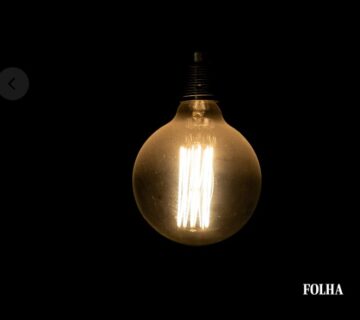Brazil’s small hydroelectric power plant (SHP) potential amounts to over 15GW representing about US$20bn in investments.
To unlock this potential, these projects rely on environmental licensing rationalization and federal subsidies, however.
BNamericas talked to Paulo Arbex, the president of local SHP association Abrapch, about the importance of SHPs, the deficiencies of the free power market, and other topics.
BNamericas: What are the prospects for the small hydroelectric power plant segment in Brazil?
Arbex: The market is improving a lot in some ways. The biggest is that the authorities are waking up, including in the environmental sector, to the fact that the old policy of making the licensing of SHPs as difficult as possible was a mistake.
We have introduced wind and solar power into the matrix, but instead of decreasing emissions from the electricity sector, they have exploded in recent decades. This is because we reduced the share of hydroelectric plants while expanding that of thermoelectric plants, which often have to be activated given the intermittency of solar and wind.
BNamericas: What investments are planned?
Arbex: We have 23 SHPs under construction with installed capacity of 320MW and three hydraulic stations [up to 5MW], with an estimated capex of 2.8bn reais (US$510mn). There are 704 hydraulic station projects totaling 2,034MW and just over 16bn reais in potential investments, generating 140,000 jobs.
In terms of SHPs, there are 977 projects totaling 12,905MW, with potential to generate 91bn reais and 780,000 jobs. These are numbers related to rivers already studied and inventoried by regulator Aneel. We still have many stretches that have not been studied and from which an even greater number of uses should arise.
BNamericas: Which states have the greatest potential?
Arbex: Goiás and Minas Gerais are almost in a tie, with 2,663MW and 2,420MW, respectively. Another state that has a lot of potential is Mato Grosso, with 1,787MW. Paraná has 1,825MW, Rio Grande do Sul 1,420MW, and Santa Catarina 1,514MW.
In the northeast, where many people think there is no water, Bahia, for example, has 481MW. In São Paulo, where we thought the hydroelectric potential had already been exhausted, there are 4,000MW of potential, of which 521MW are already inventoried by Aneel.
BNamericas: What about the north, where the largest hydrographic basin on the planet is located?
Arbex: The point is that the cost of inventorying there is so great, and the environmental headache is so strong, that the SHP segment does not focus on the region. Over there, the profile is for big hydro plants.
BNamericas: What are the main challenges for the segment’s expansion? Are some states working on improving environmental licensing for such projects?
Arbex: What we stand for is a rationalization of the licensing process. We have more than 30,000 environmental standards, regulations and ordinances in Brazil, in addition to more than 20 intervening bodies. It’s a riot. But we have managed to simplify, in a good way, of course. Goiás state has the most advanced legislation, with increasing computerization.
BNamericas: Are there any expectations regarding Aneel’s auctions in 2021?
Arbex: They are very much focused on fossil fuel thermals, again. In some of them, SHPs will participate, but we are losing out on environmental and fiscal issues. The solar and wind production chain is exempt from [service and industrial product taxes] ICMS and IPI and even import tax and the PIS/Cofins [social contribution taxes]. We want to have access to the same benefits.
There is no point in subsidizing large conglomerates, such as Siemens, GE and Vestas, and leaving small family businesses, such as Hacker, without support. So, the costs for the equipment we use are 38% higher.
BNamericas: Does the free market offer growth possibilities for the segment?
Arbex: The economy of the free market consists of transferring the costs of security, service and reliability to regulated market consumers. If the market is opened without correcting these errors, when everyone is in the free environment, that economy will disappear, because nobody will be transmitting costs to anyone.
And this is not feasible today because the low-voltage consumer cannot yet migrate. To grow in the free market, it is necessary to address the issue of energy ballast, which is being dealt with in federal bill 232. But the discussions are fuzzy.
Editor’s note: The “electric power sector modernization bill” provides for the separation of ballast and energy. Ballast is a guarantee required by the mines and energy ministry (MME) and paid by generators, distributors and consumers. Currently, ballast and electric energy generated and consumed are negotiated as if they were a single product. According to the bill’s proponents, this approach generates distortions.
BNamericas: How do ESG criteria apply to SHPs? Are investment funds interested in these projects?
Arbex: There is a lot of interest. National and international funds are consulting us. Everyone that is familiar with hydro plants likes their profile.
However, hydroelectric plants have been demonized for 20 years in a row. So the industry needs support to resume cruising speed. The bottlenecks are environmental licensing and the lack of equality with other renewables. In addition, we need to contract at least 200-300 reais/MWh in view of current steel prices.
From 2013 to 2017, hydroelectric plants generated 73.5% of MWh, accounting for 46% of revenue, while thermal plants delivered 19.8% of MWh and received 40% of revenue. What’s the fairness in that?
Fonte: BNAmericas
23/04/2021





No comment